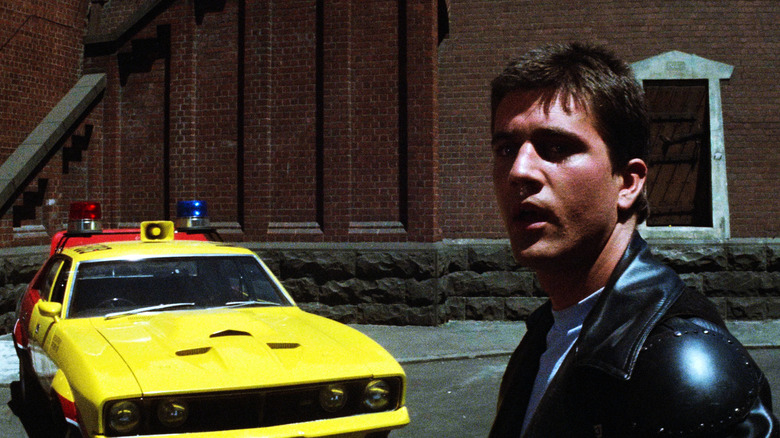
George Miller's 2015 installment in his Mad Max anthology, "Mad Max: Fury Road," constantly raises the question: "Who killed the world?" There's no better place to look for that answer than the original installment that started it all, 1979's "Mad Max," the debut film from writer-director George Miller. Starring a then-unknown 23-year-old Mel Gibson and filmed on a shoestring budget, "Mad Max" would set off a series of films that upped the ante in vehicular action and only moved deeper and deeper into apocalyptic chaos.
Before audiences learned about places like the Bullet Farm in "Fury Road" or the titular Thunderdome from "Mad Max: Beyond Thunderdome," we saw the small town setting of the original "Mad Max," which featured Max Rockatansky before he ever went mad. Set before the societal collapse, the world of "Mad Max" shows the steady decline of one lawman trying to hold on to the small semblance of order and sanity he left in his life. That setting helps differentiate this movie from the installments that followed, with its conclusion giving way for Max to live as the road warrior he's known as in future films.
An Action Film For The Times
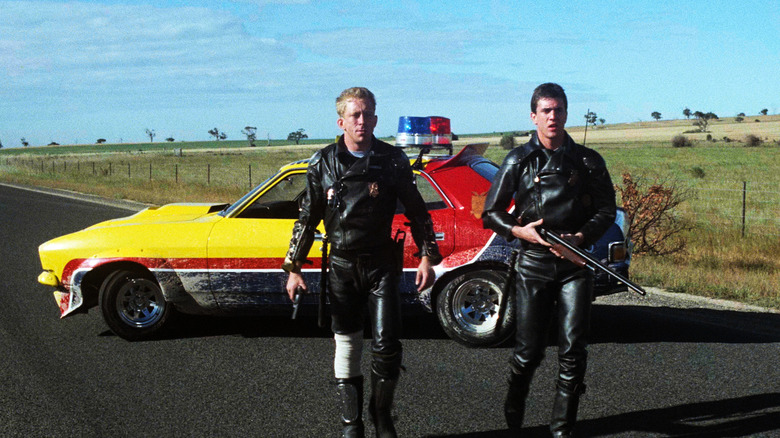
With the time period only referred to as "a few years from now," "Mad Max" paints a picture of a society on the brink of collapse, with some functioning law enforcement still present. At the center of the film's struggle is the Main Force Patrol (MFP), one of the last forms of law enforcement left.
Director George Miller's particular choice of setting helped define the entire "Mad Max" franchise. Miller intended to create a silent film with sound, leaning on the highly physical work of silent movies to achieve the visual kineticism he was trying to achieve. Miller took the simple concept of law enforcement chasing down insane biker criminals as a means to display visceral vehicular combat that felt real.
To understand the world of 1979's "Mad Max," it's also important to remember the social backdrop at the time of the film's production. Just six years earlier, the oil crisis of 1973 would lead to intense violence in Australia. Miller and his production crew wanted to convey the levels to which people would stoop in order to keep their vehicles fueled up. Both of these elements, from Miller's desire to utilize the physicality of silent films to the real-world struggle for oil years prior, would help to shape the world of "Mad Max."
Max Before He Went Mad
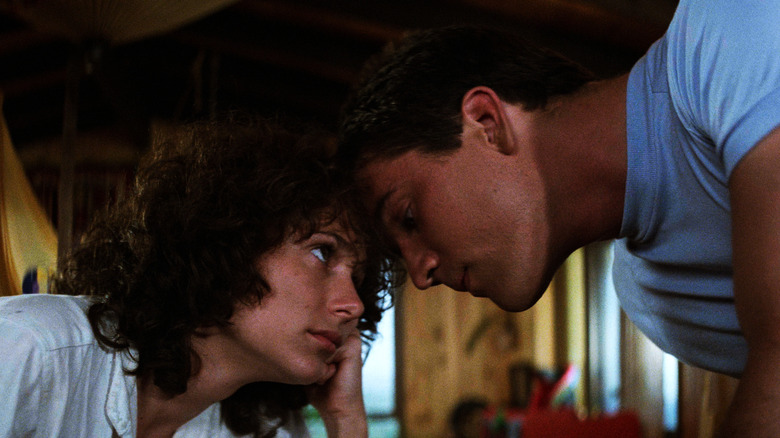
Max Rockatansky in "Mad Max" is a character almost entirely different than the feral and silent Max from "Fury Road" or the nihilistic loner we see in "The Road Warrior." Instead, we see a reserved member of the Main Force Patrol trying desperately to live outside the world around him. The film's opening chase scene perfectly illustrates that point, with a deadly pursuit of a biker who had killed and stolen an MFP officer's interceptor vehicle dragged out until Max is forced to intervene, killing the car thief in the process.
With this opening chase, the events of "Mad Max" are set in motion. The opening is also used to introduce the primary cast: Max's friend and fellow officer Goose (Steve Bisley), his superior officer Fred "Fifi" Macaffee (Roger Ward), and his wife Jessie (Joanne Samuel). This introduction is integral to Max's mindset in the film, with each of these characters being a crucial anchor to Max's sense of normalcy in the world slowly decaying around him.
Max's home life consists of watching his wife play saxophone while his child plays with what looks like a very real gun. So as it stands, Max's sense of normalcy in the world is already a bit unhinged. He can't seem to sleep at night, afraid of the person he is and of what he does. Unbeknownst to him or the MPF, the thief Max killed belonged to a biker gang led by Toecutter (Hugh-Keays Byrne) and his young ward Johnny the Boy (Tim Burns). (You've gotta love the character names in these movies.)
Becoming The Road Warrior
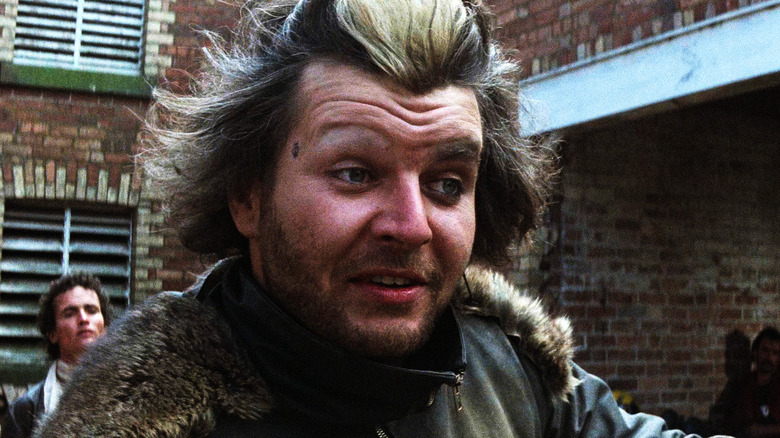
Toecutter and his band of savages represent everything Max is trying to look away from, and as their antics continue to put Max's world on the brink of madness, Max does everything but solve the problem at hand. When Goose is lured into a trap by Johnny the Boy and burned alive, it's a gruesome change of pace for the film. Max chooses to ignore the problem and leaves on a "vacation" with his wife and child ... but if you've ever seen a movie before, you know he won't be able to get away that easily.
The larger message of "Mad Max" begins to seep through in the film now, with ignorance not always meaning bliss. Try as Max may to ignore the state of the world and the turmoil inside himself, Toecutter and his gang still seem to be encroaching at the edges of his life. Max says as much himself in a critical scene where he opens up to his wife after Goose is left comatose. Max is scared; he realizes that the only difference between him and Toecutter is that Max has a badge. Max's denial of his innate nature comes to a head when his wife and child are run down by Toecutter, leaving his child dead and his wife, Jessie, in an unresponsive state.
At this point, Max transforms into the road warrior everyone is more familiar with. Donning his MFP gear and taking a rare all-black V8 interceptor vehicle, Max relentlessly hunts down Toecutter's gang, killing them off one by one, leaving young Johnny the Boy for last.
A New And Cruel World
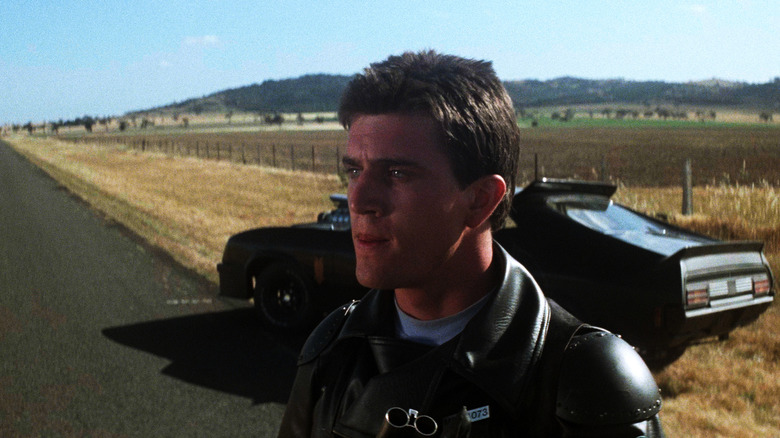
Finding Johnny looting a dead body, Max handcuffs Johnny's leg to a car leaking gasoline. In a grim message about the state of humanity, Max leaves Johnny in a precarious scenario: Either he hacks his leg off and survives, or stays handcuffed to the car that will inevitably explode and kill him.
"Mad Max" delivers a haunting message through Max's unhinged method of punishing Johnny for choosing to be a criminal in this world. Either Johnny makes a drastic change that will force him to rely on society, or he dies choosing not to partake in this new world at all. Max faces the very same symbolic choice in the film. He can either continue to live in ignorance and end up like those close to him, or he can cut off a part of his sanity, making a drastic change to himself and his psyche and be a part of the world that is falling apart.
By the end of "Mad Max," Max has chosen to live a life on the road, with the final shot of Max driving in the middle of the street reflecting the delicate balance he has struck in the film. Max teeters back and forth, both on the side of sanity and madness. He's found his place in what will soon be the wasteland.
The Future Of Mad Max
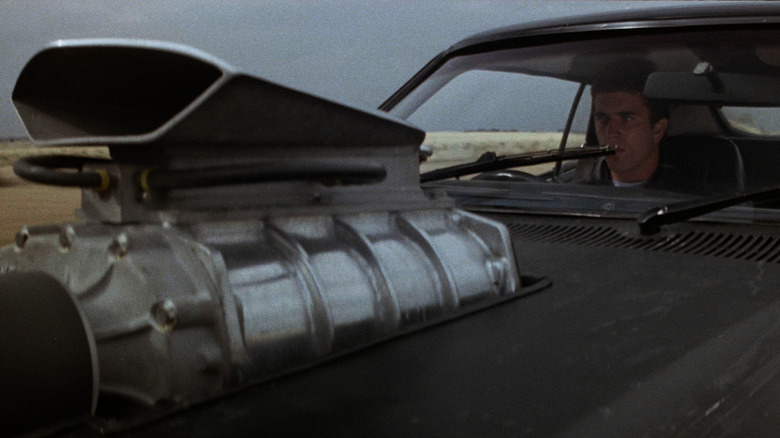
"Mad Max" and its ending have become a critical part of the lore of the "Mad Max" anthology of films. The success of the 1979 original was initially limited to Australia, with a dubbed North American release not finding an audience. The character of Max Rockatansky wouldn't see his relevance in the U.S. until the release of "The Road Warrior," which had to change the title because the original title of "Mad Max 2" wouldn't have worked in the U.S. since hardly anyone had seen the original. "The Road Warrior" would soon bolster the character of Mad Max, making Gibson an action hero icon and paving the way for more "Mad Max" films in the future.
"Mad Max" stands the test of time as a great first installment that carries an almost entirely different tone than the rest of the series and a protagonist far removed from where he is a few more films down the line. The movie's ending delivers a bleak message about the depths of human cruelty, the concept of justice, the idea of a burgeoning new society that preys on the weak, and how one man who's accustomed to upholding the law would adapt to such a changing world.
Read this next: The 20 Best Dystopian Movies Of All Time
The post Mad Max Ending Explained: Becoming The Road Warrior appeared first on /Film.

0 Commentaires